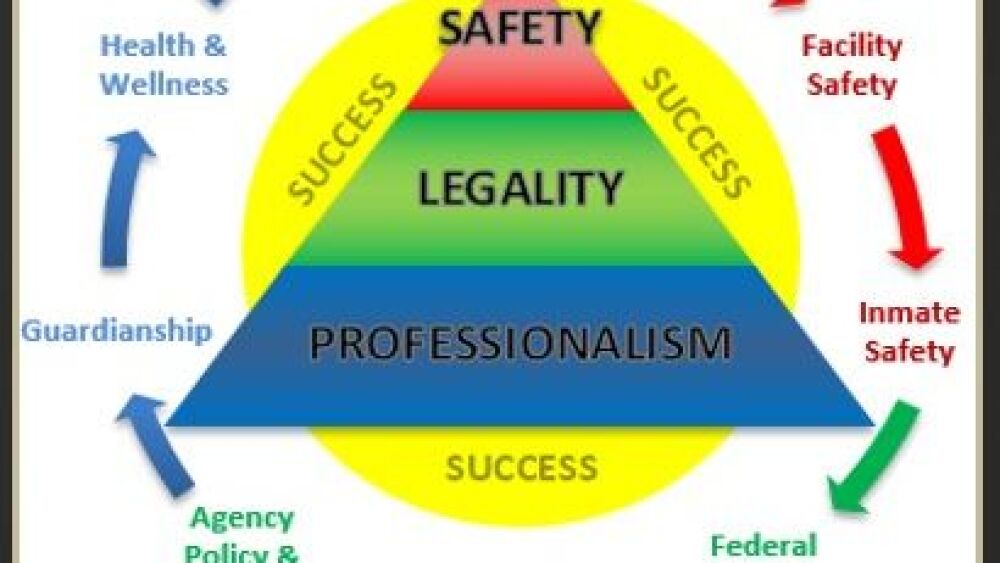In what is the fifth of a nine-part series, I outline what I call the “Corrections Formula,” an easy way to remember nine principles to optimize your success as a correctional officer.
The formula is designed to guide your thoughts, decisions and actions so you develop an operational mindset where officer safety is your top priority, professionalism is your foundation and legality is your path.
There are three elements of the corrections formula:
- Safety;
- Legality;
- Professionalism.
Each of these three elements contain three principles that make up the nine principles for success:
- Officer safety – Your top priority and your duty to yourself and your coworkers.
- Facility safety – Your duty to the communities you serve.
- Inmate safety – Your duty to those you have been entrusted to protect.
- Federal law – The U.S. Constitution, which shapes state law, major acts of congress and case law.
- State law – The laws and statutes of the state, which guide your facility’s operations and practices.
- Agency policy and procedure – The guardrails that keep you on the path of legality and in compliance with the law.
- Guardianship – Your purpose as a correctional officer and why you do what you do.
- Health and wellness – Maintaining both physical and mental wellness.
- Firm, fair and consistent –The golden rule in being the same professional every day.
This month we look at the fifth principle, state law around use of force.
PRINCIPLE 5: state LAW regarding use of force
Every state has its own statutes, laws and courts that typically funnel down from the federal level. It is critical you stay informed with all current state law that governs how jails and prisons operate.
The law for the use of force is fairly consistent across each state. The courts are going to look at whether or not the force was:
- Necessary – Were there reasonably effective alternatives?
- Reasonable – Would a reasonable officer react in a similar manner given a similar set of circumstances?
- Justified – Was there a legitimate reason for the force used, and can you articulate the reason for the use of force?
In order for your force to be lawful, it must be objectively reasonable under the totality of circumstances.
Levels of resistance
There are several categories of resistance:
- Static resistance – Isometric muscle tension actively generated by the violator.
- Egressive resistance – Violator is attempting to escape control using evasive and reactive movements. There is now more than static resistance, but the violator is not attacking.
- Aggressive resistance – Violator is now attacking or assaulting you. They are trying to injure you in the process of resisting.
- Aggravated aggression – Violator has pre-planned the attack or is implementing weapons that are potentially lethal.
Progression of force
There are several steps in the progression of use of force:
- Presence – Being there, badge, uniform.
- Verbal commands – Talking, directing, trying to de-escalate.
- Physical touching – Guiding or directing the person for minor passive resistance.
- Control tactics – Using control tactics in trying to gain compliance.
- Defensive tactics – Designed to impede the violator as they are attacking you.
- Termination tactics – Designed to STOP the violator as fast as possible.
PANAM Test
Hudson v. McMillian is an excessive force case that speaks to excessive force constituting cruel and unusual punishment under the Eighth Amendment. However, the five-pronged Hudson test the courts use to evaluate these cases is still critical to include in any use of force, regardless if convicted or pre-trial.
The five-pronged test (PANAM) helps the courts determine whether or not your actions were reasonable, necessary and out of good faith, or malicious, unreasonable and unnecessary:
P – Perceived threat by correctional officers?
A – Any and all efforts to deescalate?
N – Need for the application of force?
A – Amount of force that was used?
M – Medical issues and extent of any injuries?
Next: Agency policy and procedure













